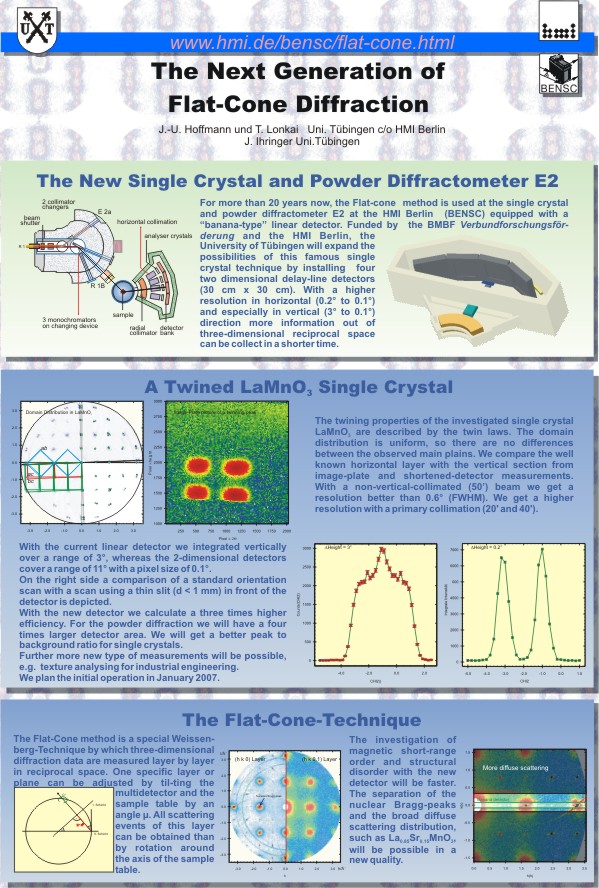The Flat-Cone Diffractometer E2
Instrument Description
The diffractometer is equipped with a position sensitive detector
covering 80° of 2θ, which can be tilted out of the scattering
plane (flat-cone technique). Three primary collimations and three
wavelengths can be chosen automatically in some minutes
time. Parasitic scattering from cryostat or furnace walls is reduced
by an oscillating radial collimator.
For single crystal studies the multidetector and the sample table
can be tilted around an axis perpendicular to the monochromatic beam
to investigate upper layers in reciprocal space. For the investigation
of elastic and inelastic diffuse scattering distributions, five
analyzer crystals and collimators can be mounted in front of the
multidetector. The crystals cover 40° 2θ of the sample
simultaneously and diffract in vertical planes. Three-dimensional data
in reciprocal space can be collected systematically for a given energy
transfer.
Further instrument details can be found in this flyer and on the E2
Homepage.
Applications
The instrument can be used for both powder and single crystal
investigations:
Single Crystal Diffraction
As single crystal diffractometer with high intensity and a low
background, the instrument can be used for the study of:
- complicated distributions of Bragg and superstructure reflections in
three dimensions of reciprocal space (Flat-Cone)
- diffuse scattering arising fromstructural and magnetic
disorder.
- Energy analysis of neutron scattering can also be done to some
extent, especially to record the elastic contribution.
Powder Diffraction
As powder diffractometer with medium resolution and high intensity,
the instrument can be used for the study of:
- magnetic and crystal structures
- phase transitions
- in-situ kinetic of phase transitions and chemical reactions
|

Poster as pdf-file (1.1MB). |
Acknowledgements
The Flat-Cone Diffractometer is a "Verbundforschung"-Project of the University of
Tübingen (Institute of Applied Physics) and the Berlin Neutron
Scattering Center (BENSC) of the HMI Berlin, financial support by the
Federal Ministry of Education and Research (BMBF).
For more information contact joerg.ihringer@uni-tuebingen.de
